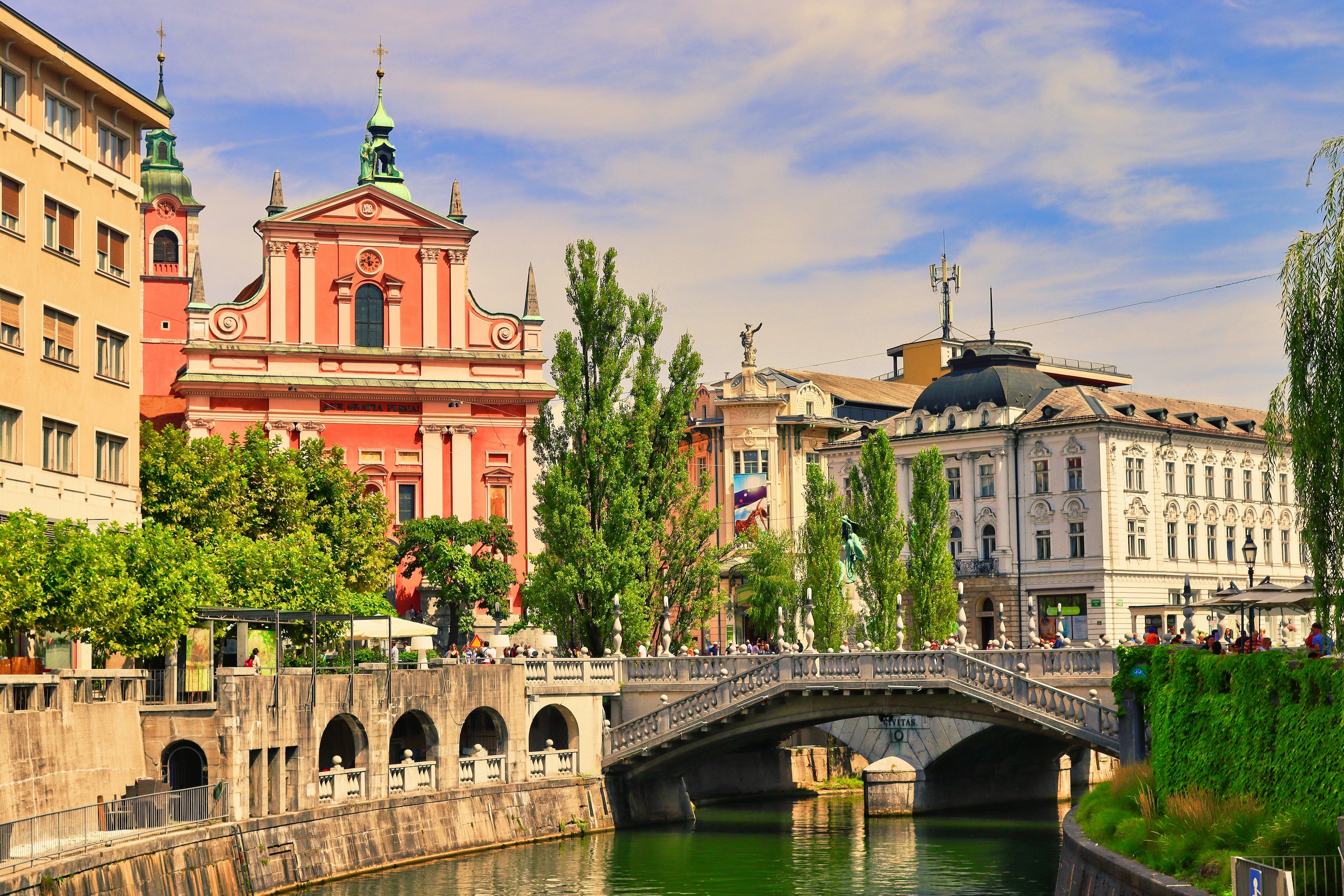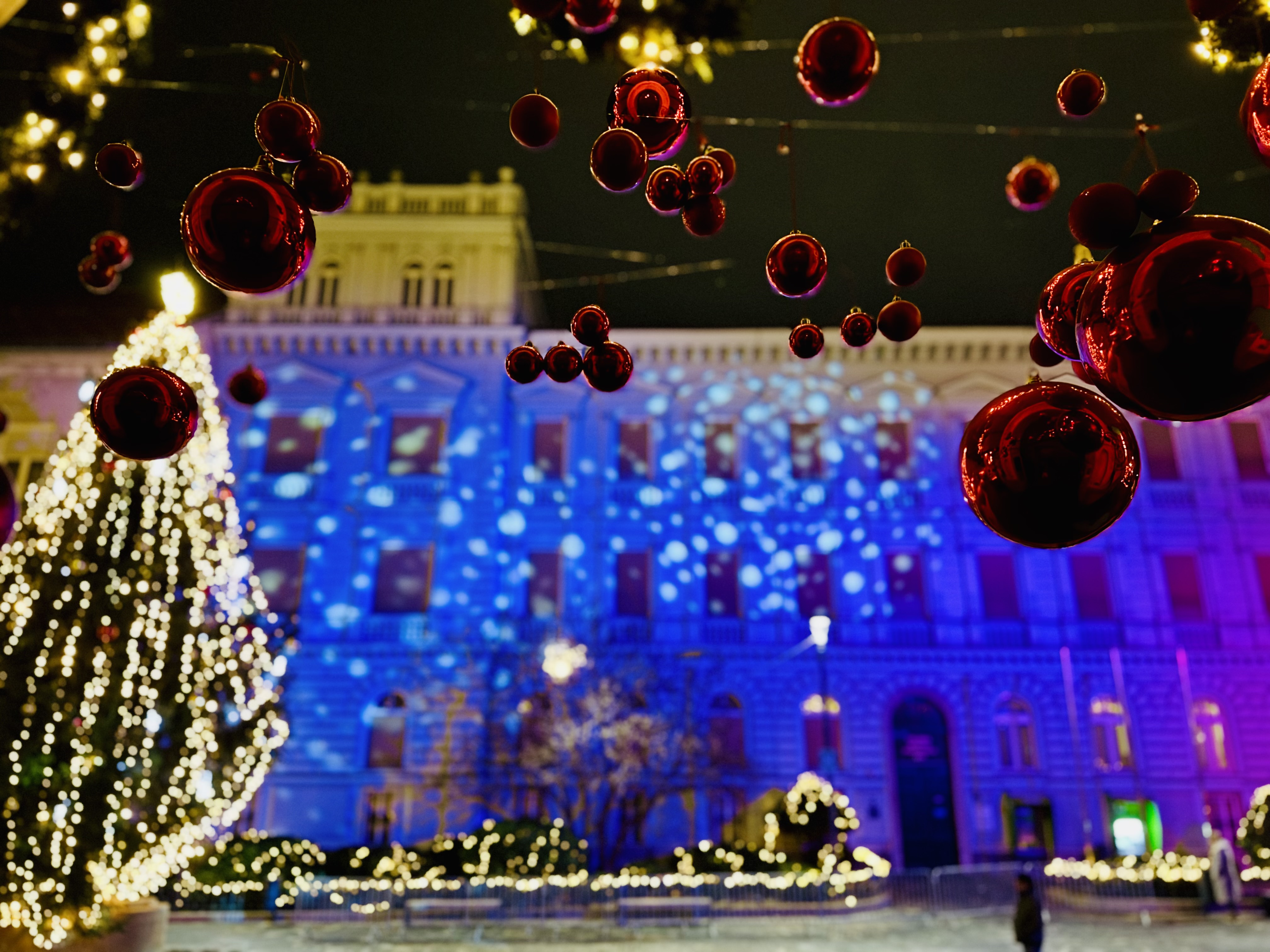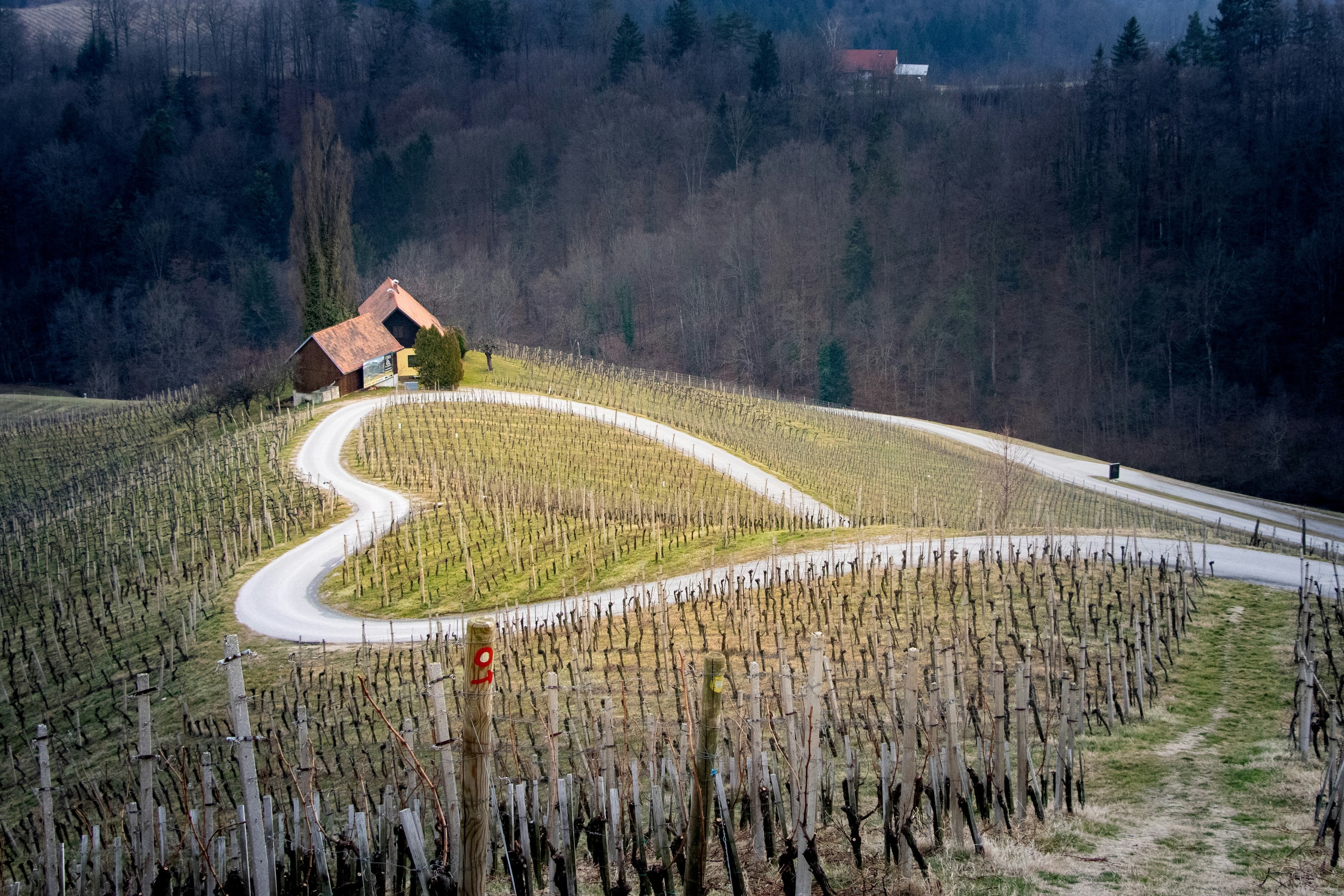Central Slovenia

Not exactly in the center, but still central between the coast and the eastern regions, and the Julian Alps and Croatia, lie the Green Karst, the Idrija and Cerkno Valleys, and the capital, Ljubljana. These are three completely different areas with no real similarities, except that they are all worth a visit.
Over 2,000 years ago, a Roman garrison settled next to a small hill on flat land in the heart of Slovenia. They founded a settlement called Emona. Over time, this settlement grew into a town, and centuries later, the town became known as Ljubljana. Situated centrally in Slovenia, Ljubljana is the lively heart of the country.
Remnants of Roman structures can still be found in Ljubljana and the forests and roads of the Green Karst, which served as trade routes connecting the Roman Empire with its homeland.
Central Slovenia is lush and green. The landscape is characterized by forests and low mountains. While Ljubljana is the bustling hub of the region, the rest of the area is peaceful, full of natural beauty. Notable natural treasures include the large Kočevje Forest, Idrija and Cerkno, the Bloke Plateau, and the Green Karst, all of which harbor unique natural wonders.
Destinations in this area
Ljubljana
The capital Ljubljana, which is also one of Europe’s green capitals, is the vibrant heart of the country, and a visit to the city is a must when exploring Slovenia. It is actually an excellent starting point for exploring all the Slovenian specialties.
Green Karst
Dark forests and hidden caves. The Green Karst is the region of mystery. The Kočevje Forest, the Bloke Plateau, and the surrounding karst areas are some of the least populated areas in Slovenia. Here, wild animals outnumber humans.
Nestled between the forests and hills lie the vast Postojna Caves, and the Predjama Castle is hidden beneath a towering cliff. In the Kočevje Forest, the original inhabitants have disappeared, but the brown bear population is thriving. On the Bloke Plateau, you will experience what it truly means to be immersed in nature, and in the karst areas, you’ll discover a whole world hidden beneath the ground.
This region offers an authentic, untouched experience, perfect for those seeking tranquility, wildlife, and natural beauty.
Things to see and do:
- Postojna Caves
The Postojna Caves are one of Slovenia's most famous and visited natural attractions, located in the southwestern part of the country, near the town of Postojna. This impressive cave system is known for its vast size, stunning stalactites, and stalagmites, as well as the unique and mysterious underground world it offers.
The Postojna Caves span over 24 kilometers of passageways, making them one of the largest cave systems in Europe. Visitors can take a train ride into the caves, followed by a guided walking tour, which leads through spectacular chambers and narrow corridors. One of the most famous parts of the cave system is the Great Hall, a massive underground space that is home to incredible formations, including towering stalactites and stalagmites.
In addition to the impressive geological formations, the Postojna Caves are home to the Proteus, a rare and blind amphibian also known as the "human fish" due to its pinkish skin. These fascinating creatures inhabit the dark, underground waters of the cave system and are one of the cave’s most interesting features.
The Postojna Cave is not only a geological wonder but also an excellent destination for anyone interested in nature, adventure, and science. The surrounding area also offers attractions such as the Predjama Castle, a dramatic castle built into a cliffside near the entrance to the cave system.
Visiting the Postojna Caves provides an unforgettable experience that allows you to explore the magical and mysterious world beneath Slovenia's surface.

- Lake Cerknica
Lake Cerknica is a unique and fascinating karst lake located in the heart of the Green Karst region of Slovenia. It is one of the largest intermittent lakes in Europe and a natural wonder that offers visitors a chance to experience the dynamic and changing landscape of the area. The lake is rich in wildlife, especially birds, and is a key spot for migratory species. It also holds cultural significance in local folklore.
Visitors can enjoy hiking, birdwatching, and cycling around the lake, with the Cerknica Lake Observation Tower offering panoramic views.
- Kočevje
Kočevje is a town in southern Slovenia, located in the heart of the Kočevje Forest. It’s known for its lush forests, wildlife, and historical significance. The area is one of the least populated in Slovenia, making it a peaceful retreat for nature lovers and outdoor enthusiasts.
Kočevje is famous for its brown bear population, and the surrounding forests are perfect for hiking and wildlife watching. The town also offers historical landmarks, such as the Kočevje Castle and the Russian Chapel, reflecting its cultural heritage. It’s an excellent destination for those seeking a combination of nature, history, and tranquility.
How to get here?
The Green Karst can be reached by driving from Ljubljana towards the coast and taking the Postojna exit, or by taking the inland roads to Rakitna and then crossing the Bloke Plateau.
Kočevje is located south of Ljubljana. From the Ljubljana ring road, take the exit towards Kočevje.
Idrija
Idrija is a small town with great significance. Once, its mercury mine provided 5% of the budget for the Austro-Hungarian Empire. Today, it is recognized as a UNESCO World Heritage site.
Nestled between green mountains and the Idrijca river, Idrija is halfway between Ljubljana and the Soča Valley. It became famous for its mercury mine, discovered over 500 years ago. The mine, now closed, is a UNESCO World Heritage site, joining the Almadén mine in Spain as the largest mercury mines in the world. Beneath Idrija lies a 700-kilometer network of mining tunnels, a small part of which is open to visitors.
Idrija is not a typical industrial town. Instead, it is a charming, historic town surrounded by nature. Key attractions include the Antonijev Rov mine shaft, one of the oldest preserved mine shafts in the world, and the Gewerkenegg Castle, which now houses the Idrija Museum. The museum tells the town’s rich history, beyond just mining, including its unique lace-making tradition and World War heritage.
The Geopark Idrija is a Natura 2000 nature reserve with diverse natural wonders, including the deep Wild Lake, waterfalls, and ravines, all accessible by walking or biking.
Idrija is also known for its local specialty, žlikrofi, a potato-filled pasta served with meat sauce.
To reach Idrija from Ljubljana, take the highway towards the coast and exit at Logatec. From the Soča Valley, head to Most na Soči and follow the road to Idrija.
Though there is no train, buses run several times a day from Ljubljana, taking about an hour and 15 minutes.



